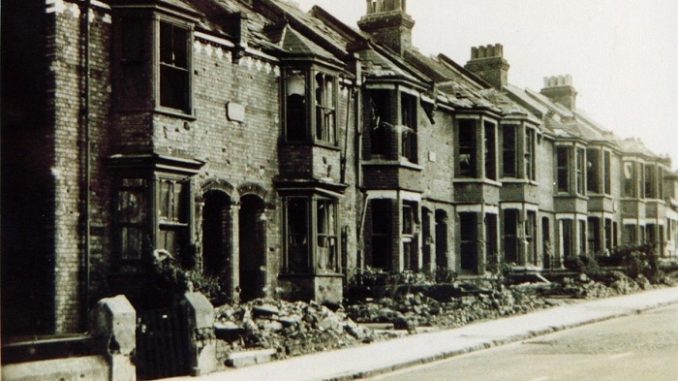
Thanet’s World War Two connections will be in the public eye once more with the release of a blockbuster movie this Summer.
Feature film Dunkirk is released on July 21 and tells the tale of the wartime Dunkirk evacuation, which Ramsgate and Margate played a major role in with the Little Ships that carried out the epic rescue operation.
The film is a co-production between the Netherlands, the United Kingdom, France, and the United States.
Filming began on 23 May 2016 in Dunkirk, France, and stars include Tom Hardy, Kenneth Branagh and former boyband singer and X Factor winner Harry Styles of One Direction.
The P22 gunboat, moored in Ramsgate until last month, is one of the craft featured in the movie after it filmed on location in Dunkirk last November.
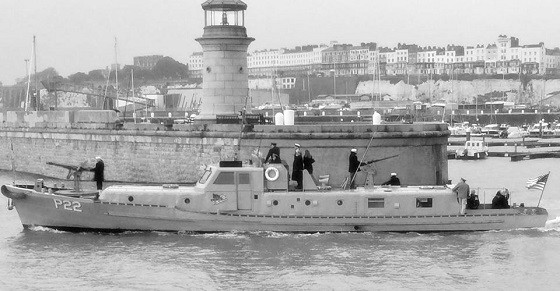
The movie charts the daring and valiant actions of all those involved in the evacuation of thousands of troops from the beaches of Dunkirk in 1940, who were under constant attack from German aircraft and guns.
The evacuation, codenamed Operation Dynamo, involved an odd assortment of yachts, motor cruisers, fishing boats and other small craft which were able to sail close enough to Dunkirk’s beaches to pick up troops and ferry them to the waiting freighters, passenger ships and warships, or back to the harbours of Margate and Ramsgate.
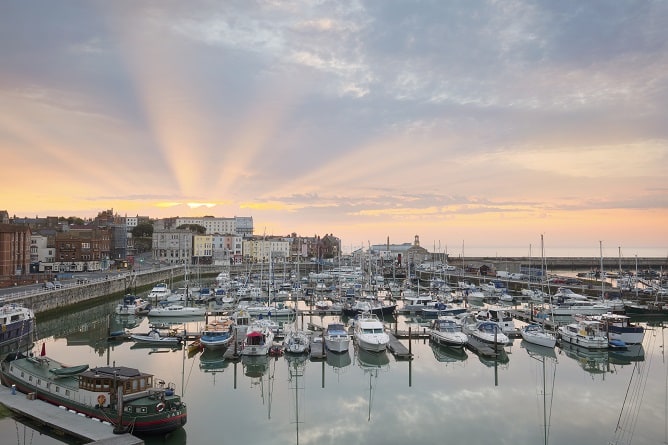
The ‘Little Ships’ and the contribution these small civilian vessels and the people on board made to the evacuation, gave rise to the term ‘Dunkirk spirit’.
Some 4,200 ships left from Ramsgate Harbour to rescue troops from Dunkirk and 80,000 men were brought back to safety in Ramsgate. In Margate, 46,722 soldiers were landed.
On the 60th anniversary of Dunkirk, Dame Vera Lynn unveiled a plaque at Ramsgate Harbour to commemorate Thanet’s role in the Dunkirk evacuation.
Discover more of the ‘Dunkirk Spirit’ in Thanet’s World War-related attractions:
Ramsgate Tunnels
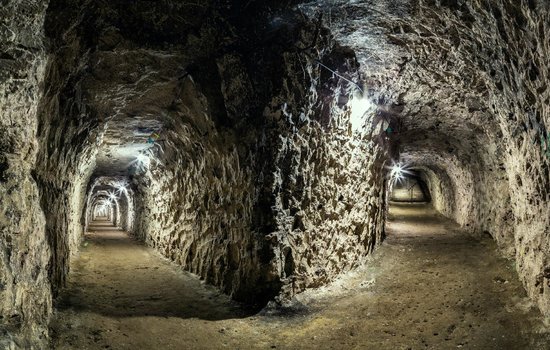
As WWII approached the borough council embarked on ambitious plans to construct over two miles of bomb-proof deep shelter tunnels to protect the civilian population of the town. Nobody realised that these tunnels would become the most extensive public underground system in the country and a ‘town within a town’. On August 24, 1940, around 300 families took to living in the tunnels on a permanent basis when 500 German bombs were dropped on Ramsgate in just five minutes.
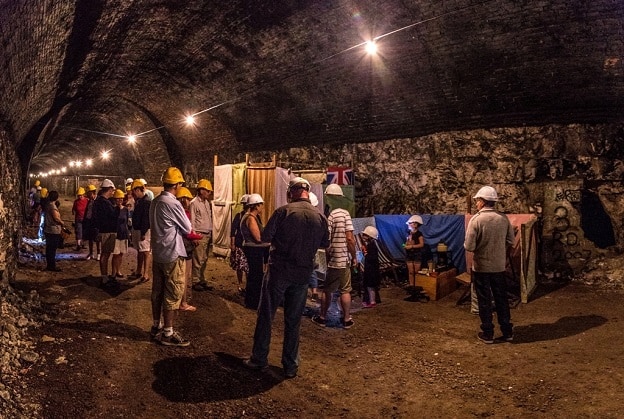
It is now possible to book a tour of the tunnels and learn about life underground from recordings of those who took refuge there from the bombardment of a frontline town – a unique opportunity to glimpse Ramsgate’s heritage and ability to survive through the darkest period of WWII.
Tours run Wednesday to Sunday at 10am, 12pm, 2pm and 4pm until end October. From October to March there is no 4pm tour.
Prices – adult £6.50, child £4, concession £5
On Wednesday, July 26 at 7pm there will be a special guided tour through the full length of the Victorian mainline tunnel from the southern to northern portal.
The walk is approximately one and a half miles and is mainly in the dark (bring your own torch or guides will provide one). En route you will see one of the steam vents, the access to the 1939 ARP tunnel, the wartime entrance steps to the tunnel from Dumpton Park Drive, the junction where the 1936 spur tunnel to Hereson Road left the main tunnel, the site of Tunnel Town, the monolithic chimney and the now blocked northern portal. Due to the uneven nature of the floor this tour is not suitable for people with limited mobility or children under 14.
Tickets are £10.50 each and may be booked at http://buytickets.at/ramsgatetunnels/103899 or by calling into the tunnels during opening hours.
Spitfire and Hurricane Memorial Museum, Manston
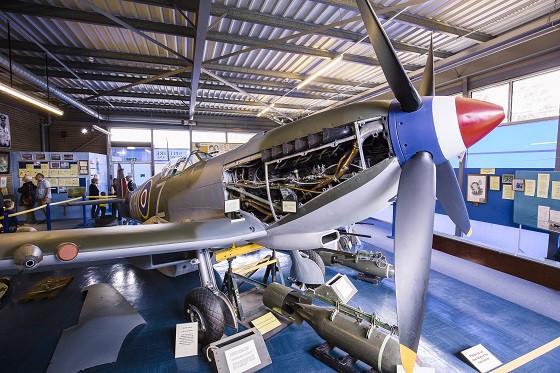
A museum dedicated to the pilots and aircrew of WW II at the historic Battle of Britain airfield in Manston. Manston airport was only 10 minutes flying time from the enemy coast and bore the brunt of the early Luftwaffe air attacks in the summer of 1940.
The museum displays two iconic aircraft, the Supermarine Spitfire Mk XVI and the Hawker Hurricane IIC, along with a host of objects and artefacts which help tell the story of life in and around Ramsgate during WWII
Open daily, summer 10am to 5pm and winter 10am to 4pm. Closed 24 December to 2 January and Mondays in January and February.
Free entry
RAF Manston History Museum, Manston
Luftwaffe aerial photograph of RAF Manston at the outbreak of war in 1939 show it was still an all-grass airfield. During an eventful Battle of Britain, Manston was heavily bombed and airfield buildings destroyed, which caused dispersal of many of the staff to surrounding housing. It was one of the few airfields installed with the Fog Investigation Dispersal Organisation (FIDO) system, designed to remove fog from airfields by burning it off with petrol. Being close to the front-line and having a long and broad runway became something of a magnet for badly damaged aeroplanes that had suffered from ground fire, collisions, or air attack but retained a degree or airworthiness. The museum covers the history of aviation at Manston from WWII till 2014, plus some startling aerial views dating from the WWII era and the post-war years.
Open daily, March to October, 10am to 4pm. Saturday and Sunday only November to February, 10am to 4pm.
Adult £2, child 50p
‘Little Ship’ Sundowner, Royal Harbour, Ramsgate (external viewing only)
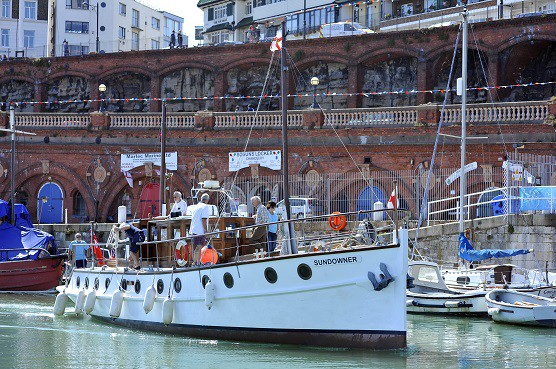
Sundowner can be viewed from Pier Yard in front of Ramsgate Maritime Museum adjacent to the Dunkirk Memorial Stone Plaque.
Sundowner was built in 1912 as a motor yacht. In 1929 she was found lying in the mud at Conyer Creek by Sylvia Lightoller who was looking for a cruising yacht. Sylvia who was Australian called the ship Sundowner – the Australian term for a ‘tramp’.
On June 1, 1940, in company with 5 other ships, Sundowner crossed the channel to Dunkirk and embarked 130 men, packing them in like sardines. On their arrival back to Ramsgate, the vessel was nearly sunk by the weight of troops moving to one side of the ship to disembark.
After this Sundowner continued her war service as a coastal patrol vessel and took part in a number of spectacular rescues
The ship was restored in 1990 to take part in the 50th anniversary Dunkirk commemorations.
Margate Museum
Visit the WWII room at Margate Museum and see displays on rationing, gas masks and other military memorabilia. There is also a display relating to Dunkirk and models of two paddle steamers which transported over 10,000 of the 48,000 men who were brought back to Margate from Dunkirk.
Open summer, Saturday, Sunday, Wednesday and Bank Holidays, 11am to 5pm. Open winter, Saturday and Sunday 11am to 5pm and Wednesday, 11:30am to 2.30pm. Closed Christmas
Adult £2, senior citizen £1.50, under 16 with adult free.
www.margatemuseum.wordpress.com
St. Peter’s Village WWII Graves Tour
Visit the graves and remember those who died during or as a result of the 1939-1945 World War. There are 14 servicemen buried in St. Peter’s Churchyard, but the tour also includes the graves of five local firemen who were killed by enemy action whilst on duty. This is a guided walking tour with tales of those being honoured.
Tours will run on 12 July at 2pm, 12 August at 10am, 13 September at 10am and 11 November at 9:45am.
Tours are free and last 90 minutes. Children are welcome with a suggested minimum age of 10 years to appreciate the experience.
Ramsgate Blitz Walks
Visit the places and hear the stories from the frontline of Britain’s heaviest bombed seaside town. The walks start from Ramsgate library and last about two hours.
First Sunday each month at 10am, plus Fridays throughout July and August at 7pm
Walks are free with donations welcome. No need to book, dogs and children welcome. Private and party walks can be arranged (minimum three people).
Did you know during WWII…
Granville Hotel Ramsgate was used as a military hospital. The gable on the western end of the building was destroyed by a bomb in WWII
Winter Gardens – Thanet was made a restricted area, due to invasion fears, and it was prohibited to enter it for leisure or pleasure purposes. The Winter Gardens’ first war-time role was during the evacuation from Dunkirk when it acted as a receiving station for some of the 46,000 troops landed at Margate.
It also found other war-time roles such as an air raid precaution and food rationing centre. There were also concerts for the troops on Sundays and Brighten-Up Dances every Thursday and Saturday. In January 1941 many of the windows were broken when a sea mine exploded nearby, but the main structure was undamaged. Six months later the Winter Gardens received a direct hit on 7th July 1941 causing considerable damage. The main structure of the hall remained intact and the chandeliers survived as they had been removed for storage. The plans for reconstruction of the Winter Gardens were drawn up in 1943 but due to the war, a start on the work could not be made until February 1946.
Manston Airport, during an eventful Battle of Britain, Manston was heavily bombed and airfield buildings destroyed. This caused dispersal of many of the staff to surrounding housing. It was one of the few airfields installed with the Fog Investigation Dispersal Organisation (FIDO) system designed to remove fog from airfields by burning it off with petrol. Being close to the front-line and having a long and broad runway the airfield became something of a magnet for badly damaged aeroplanes that had suffered from ground fire, collisions, or air attack but retained a degree of airworthiness.
During the war, the entire Royal Seabathing Hospital, was evacuated to Southill Park near Bracknell, Berkshire, and the building was used again by the military medical, particularly following the evacuation from Dunkirk. The number of beds was increased from 324 to 520 to accommodate them. Following closure in 1996, the hospital has been turned into private residents
Click here to find a tale and photos of the 1940s bombing of Ramsgate at thanetonline
Find more isle attractions at www.visitthanet.co.uk

